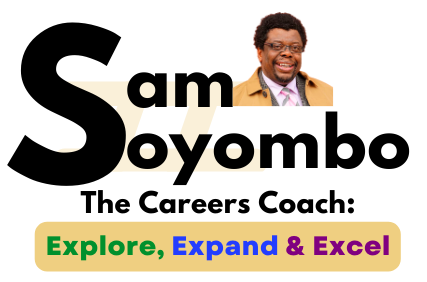
In the ever-evolving education landscape, maintaining student engagement and motivation is a constant challenge. As the world changes rapidly, educators must adapt their approaches to keep learning meaningful. One solution is integrating real-world careers into teaching, incentivising active student participation. This article delves into the essential aspect of motivating students and explores the benefits of relating education to real-world career opportunities.
It provides actionable insights on incorporating career awareness into lessons, thereby enhancing student engagement and motivation. Discover effective strategies to create a learning environment that not only educates but also inspires and prepares students for their future endeavours.
The Power of Relevance
Students often question the significance of what they are learning in the classroom. The classic refrain of “When will I ever use this in real life?” is not uncommon. Educators can bridge the gap between theoretical concepts and practical applications by demonstrating how classroom knowledge directly applies to future careers. When students see a clear connection between their learning and their future professions, their engagement and motivation levels naturally soar.
1. Making Learning Enjoyable and Impactful
When students understand the real-world implications of their studies, learning becomes an exciting journey rather than a mundane task. Incorporating real-life examples and case studies allows students to see how theories are implemented and how skills are utilised to solve complex problems. For instance, in a physics class, discussing how engineers use principles of motion to design roller coasters can ignite a passion for understanding the laws of physics.
2. Fostering Critical Thinking
Career-focused education encourages students to think critically and apply their knowledge to authentic scenarios. Interactive activities that simulate real-world challenges promote active learning and help students develop problem-solving skills. For instance, in a business class, students could work in teams to build a marketing plan for a new product, exposing them to various aspects of business operations.
3. Igniting Passion and Purpose
When students see a tangible connection between their education and future careers, it can ignite a sense of purpose. Exploring different career paths can help students identify their interests and passions, leading to informed decisions about their academic and professional trajectories. By nurturing this sense of purpose, educators can inspire students to strive for excellence and invest themselves wholeheartedly in their education.
Incorporating Career Awareness into Lessons
Indeed, let’s delve deeper into each point on incorporating career awareness into lessons to enhance student engagement and motivation:
1. Real-Life Examples:
Real-life examples provide tangible connections between classroom concepts and the professional world. Invite guest speakers or conduct virtual sessions with professionals from various fields to share their experiences and insights. This firsthand interaction exposes students to the practical applications of their learning. For instance, in a biology class, a guest speaker who works as a wildlife biologist could describe how their knowledge of ecosystems and animal behaviour informs conservation efforts.
2. Case Studies:
Case studies offer a deep dive into real-world scenarios, allowing students to see how theoretical knowledge is applied to solve complex problems. Present historical or contemporary cases that require students to analyse and apply their understanding. In a history class, for example, students could examine how political decisions during a specific period influenced societal development, drawing parallels to current political landscapes.
3. Interactive Activities:
Interactive activities engage students directly in experiential learning. Simulations, role-playing, and group projects mimic tasks performed in various careers, fostering critical thinking and problem-solving skills. In a chemistry class, students might simulate a forensic investigation to analyse evidence and deduce a chemical reaction’s cause, thus connecting their classroom knowledge to the field of forensic science.
4. Field Trips and Workshops:
Organise field trips to relevant workplaces, laboratories, or institutions to give students a firsthand look at real-world applications. A physics class could visit an engineering firm to witness engineers designing and testing structures, demonstrating the practical use of physics principles. Workshops conducted by professionals can offer students hands-on experience and insights into the skills required for specific careers.
5. Career Exploration Projects:
Assigning career exploration projects encourages students to research different professions, fostering a deeper understanding of potential career paths. In a literature class, students might explore how storytelling skills are employed in fields like marketing, filmmaking, or journalism. They could create presentations or reports detailing the connections between narrative techniques and effective communication in these professions.
6. Internships and Job Shadowing:
Partner with local businesses, organisations, or professionals to provide students internship or job shadowing opportunities. This immersive experience allows students to observe daily work routines, understand industry practices, and apply classroom concepts in real-world settings. For instance, an internship with a graphic design studio enables students to see how design principles are utilised to create impactful visual content.
7. Guest Panels and Networking Events:
Arrange panels featuring professionals from diverse careers to discuss their journeys and provide insights into their respective industries. Hosting networking events allows students to engage directly with professionals, ask questions, and gain valuable connections. These interactions can offer guidance, inspiration, and a broader perspective on how their education aligns with various career paths.
8. Project-Based Learning:
Implement project-based learning where students collaborate on extended projects that mirror real-world challenges. For instance, in a geography class, students could design sustainable urban development plans, considering environmental, social, and economic factors. This approach encourages teamwork, research, creativity, and application of subject-specific knowledge in a practical context.
By integrating these strategies into lessons, educators create an environment where students recognise the relevance of their education in shaping their future careers. As a result, students become active participants in their learning journey, motivated by the exciting prospects that lie ahead in the professional world.
Incorporating career awareness into classroom lessons is a powerful strategy to enhance student engagement and motivation. Educators can bridge theoretical learning and practical applications by relating education to real-world career opportunities. This approach makes learning enjoyable and impactful, fosters critical thinking, ignites passion, and helps students find purpose in their studies.
By leveraging real-life examples, case studies, interactive activities, and career exploration projects, educators can inspire their students to see the relevance of education in shaping their future careers. Ultimately, this holistic approach equips students with the skills, knowledge, and motivation they need to thrive in a rapidly evolving world.











